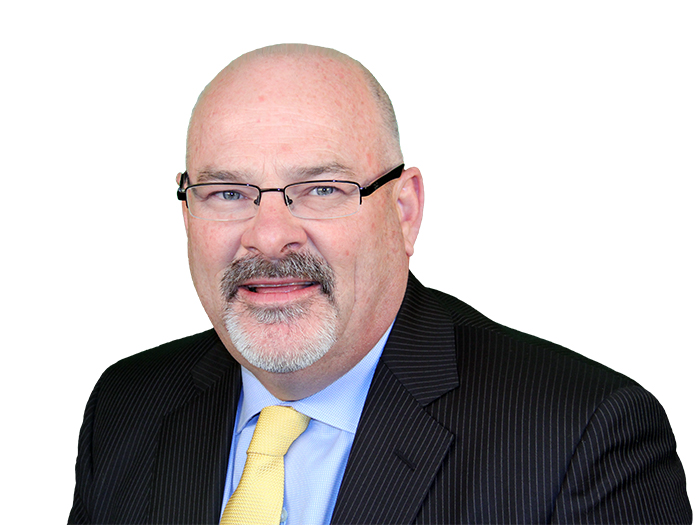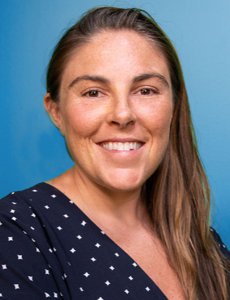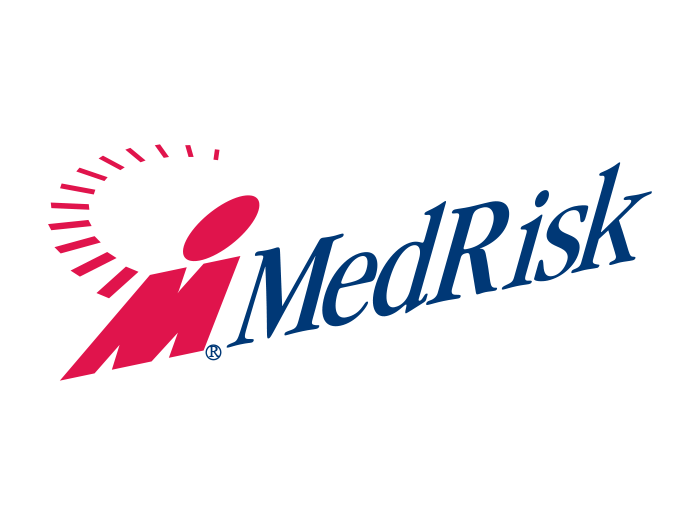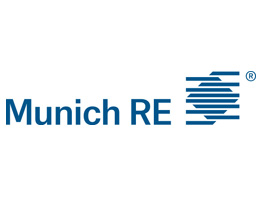13 Questions for Brian McCarthy, CEO of the eMaxx Assurance Group of Companies

At the Vermont Captive Insurance Association’s annual meeting in Burlington this past August, Dan Reynolds, the editor-in-chief of Risk & Insurance, sat down with Brian McCarthy, group CEO of the eMaxx Assurance Group of Companies. Joining the discussion were Megan McCarthy, vice president of strategic relations with the company, and Timothy Kolojay, president of eCaptiv. What follows is a transcript of that discussion, edited for length and clarity.
Risk & Insurance: Nice to meet you, Brian. I just wanted to learn more about your company, if you could fill us in on the eMaxx business model and what it is bringing to the table in aiding insureds and managing their risk.
Brian McCarthy: We’re a tech-enabled managing general agent that specializes in variable-cost insurance programs through captive insurance. Variable-cost programs are either large-deductible programs or captive insurance programs.
Our business model is bringing innovation and technology to the traditional captive insurance space. You can see that in our arrangement with Skyward, where today we provide that innovation in the captive solutions, and they’re acting as the fronting company.
We’re a high-value-added product instead of a low-expense cost consulting model in the captive space. Loss cost is the majority of the premium today.
We affect the loss costs through targeted risk management capabilities. If businesses want low-cost consulting models, they’re going to have to be prepared, especially in this environment, to ultimately pay substantially higher premiums and insurance costs. That’s really because of what’s gone on with social inflation.
We offer policyholders loss prevention and safety services on a fee-for-service basis. On the claim’s management side, we have 24/7 rapid response for claims investigation and first-strike claims capabilities.
For claims and litigation management oversight, we really mimicked Electric Insurance, GE’s model, and how they manage litigation. They do it with their own staff attorneys. We do that today also.
We’ve really been involved in pioneering some of those techniques in the litigation process with our own litigation management team. Most captive programs today use claims TPAs that have desk adjusters handling the claims.
The desk adjusters really are not capable of managing litigated claims, and the plaintiff lawyers are really taking advantage of them. So, we have litigation managers. They’re experienced defense attorneys and they provide the oversight. They work with the outside defense firms.
This is so critical, and at the end of the day, that’s part of the key reason why it’s driven the exceptional underwriting results that we’ve had. That’s been a key factor to it.
We have developed a playbook to fight back against social inflation. You can go back and look. Tim, myself and others in our organization did interviews about litigation financing, which is probably the key driver, at the end of the day, of social inflation. We started doing that in 2015, when we discovered it in 2014.
So we’ve pioneered a number of techniques today to really fight back against it. You will see several of those techniques in mongoose theory. If you are you familiar with mongoose theory, that is what is used to fight reptile theory.
Reptile is that which is implemented by the plaintiff’s lawyer. A mongoose is the only thing that can kill a reptile. So that’s how you fight back.
Our technology today is another key factor of what we bring. We have client-centric technology platforms that provide policyholders the ability to get information, including their insurance policies that are stored on the site.
We store the policies on the platform, not the independent insurance agent/broker. They have access to billing information through an API, and they also have the capability of getting risk management, like MVR (motor vehicle monitoring) data and third-party information, directly through the portal. Their overall performance of their captive programs are also on the portal.
We have a learning management system that is critical in the defense of claims, because the worst thing you want to have happen is having a driver show up for a deposition and they’ve never had a CDL (commercial driver’s license) refresher course. The attorneys just play off of that, the reptile theory. We have over 200 training videos, all 50 states, CDL and refresher courses.
We have a telematics exchange. It is a proprietary platform. We own the source code. We have over 10,000 vehicles that we get data for every three seconds regarding where that vehicle is operated and how that vehicle’s operating.
There are more than 200 telematics service providers in the United States; 50 of them have 80% market share. We have APIs that allow us to get the data, and we’re able to see what those vehicles are doing every three seconds.
We have analytics that we do on the data to really help from an insurance perspective. But we also use it to identify drivers that really need assistance in their driving habits. We can identify those drivers, and then we can work with the safety directors to help change their driving habits.
R&I: So transportation and commercial auto are areas you are pretty active in?
BM: A majority of captive insurance programs today are casualty-focused. We’re seeing a transition into the property area, which I can talk a little bit more about.
But in the overall casualty area, you see that almost all the group captives that are out there today have commercial auto, workers’ comp and liability — usually all three lines.
R&I: How long have you been CEO, by the way?
BM: I’ve been CEO of the company since 2008.
R&I: Now that you’re 15 years or so in, how do you feel about the way the company’s performing?
BM: We made the right strategic move. We were offering guaranteed cost insurance programs from inception. We became the market leader in the energy sector for downstream energy by 2014, with $250 million of in-force premium.
We discovered the litigation financing. We knew at that point in time there was no way we could make an underwriting profit. It turned out to be correct. So Tim actually headed up the team internally. We did a profitability improvement plan.
Why don’t you talk about that, Tim?
Timothy Kolojay: We took our entire operation coast to coast and went through each state reviewing the regulatory situations, where we stood as far as our market share, and as far as what our constituents looked like. We designed the program based on rate adequacy, and what we’re re-doing versus what ISO was doing as far as their rate structure.
We compared that to see whether we were adequate or indiscriminately not adequate. We went through that, went through capabilities of our agency force, our distribution force, and found out which ones were actually working well with us.
So, we basically took a look at that and put together a 200-page plan that we presented to our reinsurers and worked well with them. We brought our businesses from $250 million down to about $180 million based on results of our study.
BM: We took underwriting action to change some of the classes that we were underwriting.
But actually, Tim, talk about what we did from a risk management standpoint with the telematics camera mandates.

Timothy Kolojay, president, eCaptiv
TK: We were actually one of the first to mandate this approach. We looked at our claims, and we saw the type of risk that we were writing and looked where they were driving.
We mandated dash cameras and telematics. One of the things we found as far as risk management telematics was that ISO always places the risk at the place of garaging.
But our transportation was going into the major cities. They may have been garaged in the suburbs in low-rated territories, but all of a sudden, they were in New York City, Boston, Philadelphia — in higher-rated territories.
BM: We mandated telematics and dash cameras starting in 2015. We weren’t the first to do it, but we were right behind Baldwin & Lyons. National Interstate also was on the forefront of this with programs for dash cameras and telematics.
But today, every one of our insureds has telematics and dash cameras. If they don’t (or don’t have the right type of dash cameras — cloud-based in the vehicle), we have a team that works with them and vendors to get them installed.
R&I: Was there more you wanted to say about the company’s performance?
BM: A lot of the tech-enabled companies today, they haven’t really checked off all the boxes. We have.
We’ve had good overall growth since 2018, when we transitioned the business. We’ve have had 40% growth year-over-year.
Our customer retentions have been in the low 90s.
We’ve had operating losses that have been very limited.
We’ve spent $25 million on tech development since 2013. We didn’t overspend.
A lot of the public tech-enabled companies today have spent over $100 million in development. We did it with a small crew and very efficiently.
We focused on what we needed to focus on — attacking loss costs — because that’s the majority of the premium. The tech-enabled companies have focused on direct sales over the internet, and spent the money on selling insurance over the internet instead of focusing on loss cost.
We positioned the company to be a disruptor in the P&C space.
We saw the same things in the late ’80s that we see today in the marketplace, [businesses] seeking out alternatives, making variable-cost insurance programs the fastest-growing sector of commercial insurance.
We also brought real innovation to the captive space. We offered $5 million in limits out of the box for our captive programs in 2018, where most captives only offered $1 million at the time. A lot of captives have built capabilities to offer $2 million or $5 million in limits, but we innovated on that side.
In addition to that, we found a solution for collateral. Instead of policyholders posting letters of credit or cash in the second or third year, we gave them the option of posting a surety bond.
Insurance program bonds have been around for a long time, but they’ve been done on single-parent captive or large-deductible programs. They hadn’t been done for group captives, because it’s a challenge to really figure out the financial mechanics to get it done for group captives. We’ve figured that out.
R&I: Interesting.
BM: The other thing is underwriting profitability. That was really the key thing that we focused on. We knew that, at the time in 2018, if we didn’t get skin in the game by the policyholders, we couldn’t get them to make the investments in the risk management technology.
We started putting the dash cameras telematics mandates in place in 2015, and the policyholders, a number of them, pushed back. They wanted up-front premium discounts.
The great thing about captives is if you make the investment, you’ll get a financial payback if you have good loss experience. We gave them the financial incentive. That’s what’s really worked out effectively to get those mandates in place.
But if you look at profitability today, we have underwriting profitability on all layers. From a ground-up basis, we are running 60% loss ratios, fully developed, loaded in expense costs. The industry’s running 80% on captive business.
We are running below where the market is today, and it’s really because of all the things that we’ve done to affect the outcome of claims.
The second part is the captive side of it. We’re running very positive loss ratios there. And we’re running 50% on the excess of loss. We were just out in London with our reinsurers, and they’ve been ecstatic about the performance.
R&I: That’s great. Fantastic.
BM: So those are the things that we’ve done. We’ve really diversified the management team. We brought in a really good strong board of directors. We have a former governor on our board. We also have two former insurance commissioners on our board.
R&I: It really sounds like you’ve been innovative in various stages. That’s great. We talked about property a little bit. Are you going to get involved in property more?
BM: We have a couple of projects underway right now on the property side, one in conjunction with a financial institution.
It isn’t announced yet. I can give you a pre-announcement on that when we’re about ready so that you can hear about it.
We actually just bumped into one of the regulators here, and we talked to her about it. Of the 28 new captives that have been formed in Vermont this year alone, she told us, 80% of them have been property captives.
R&I: That’s striking.
TK: Big push. Big push these days.

Megan McCarthy, vice president of strategic relations, eMaxx
Megan McCarthy: It’s a major pain point in the market.
R&I: Very much so.
MM: It’s all along with reinsurers, with every risk-taker. You have this captive structure where there is skin in the game.
BM: Tim asked the right question. The issue with the property side is developing rates for property insurance.
TK: Many captive owners are not being very imaginative in their pricing approach. They basically go off of ISO with a few iterations along the way.
They just want to have the property within their own control instead of out in the traditional marketplace. They’re taking whatever exists out there that’s basically ISO product pricing and doing a few twists to it. But it’s not that imaginative at the present time.
BM: And the key to it is risk mitigation, right? The same risk mitigation techniques that we’ve seen on the casualty side where businesses invest in safety departments, loss control, training and education. You have to apply the same risk mitigation techniques to property.
R&I: Risk engineering, right?
BM: Risk engineering. With wildfire, you can harden buildings and protect them in a certain way to mitigate against wildfire exposure. We’ve seen it down in Florida in a car dealership that completely survived and the building nearby was completely destroyed. Post-Andrew construction, the buildings are surviving hurricanes.
The insurers and reinsurers cannot be there paying losses for businesses that aren’t investing in protecting their properties.
R&I: No doubt. Labor is a big issue across so many industries. What are your key challenges in running this business these days?
BM: Talent is always a key to any business. We are fortunate we’ve been able to retain some of the core talent that we had as we transitioned the business. But in attracting new talent, they want to work in entrepreneurial environments. They want to work from home. They want the flexibility. You have to give that to them.
The mandate for employees to come back to the office isn’t working. We got rid of all our branch offices. We had branch offices, seven of them. We closed them all. It’s actually the best thing that we’ve done.
Don’t you see that, Megan?
MM: With remote working, we’ve been able to really find the talent we need. We’re transitioning the business to a more remote atmosphere. All of our meetings that we have with our clients, because our clients are from all throughout the country, are through Zoom.
It’s a virtual world. In sales, we’ve even transitioned to a virtual process where we’re holding Zoom meetings with prospective members. It’s just amazing how big companies and corporations are fighting it and making workers come back to the office. But remote has really taught us how we can work better, smarter and faster.
BM: The biggest challenges right now for us are the claims TPAs. They really need to step up their game. They need to be more customer-centric, not vendor-centric. The model is not sustainable, we feel, with social inflation.
And social inflation’s not going away. We have a divided United States, which is a key driver to what we’ve seen in the courts, and we see that today. Especially post-pandemic, we are seeing real challenges in New York City, for example. In cases that are now going through the system and finally getting mediated, ruled on by judges and ruled on by appeals judges, we have seen substantial adverse development.
It is not going in the favor of the insurance industry, especially on fraudulent claims. We’re seeing a lot of that. We could really give you a lot of details about that.
A lot of the TPAs are private equity-owned. The private equity firms are just pulling the profits out. They’re not focused on getting claim counts down, allowing the adjusters to focus on affecting outcomes and giving a good experience to the customer or the claimant at the end of the day.
The insurance carrier-owned TPAs have a strategic advantage right now over the independent ones that are owned by private equity firms.
R&I: Did we get through the challenges okay, or were there more that you wanted to bring up?
BM: Capital is always a challenge for any business, but we’ve managed our cap table very well. We’re exploring. Since we’ve had the growth, the company is in a profitable position. We’ve been able to attract the type of capital sources to really take us to the next level.
R&I: What other market factors would you point to that are influencing captive formation or pushing an interest in captives?
BM: Captives are the fastest-growing segment of commercial insurance today. Businesses are looking towards variable-cost to control their own destiny. Business owners, they figured it out. They see that claims get paid that shouldn’t get paid.
The insurers aren’t fighting back hard enough. The claims TPAs are just not blocking and tackling. They are not impacting the outcome.
Insureds have been frustrated. They’re a lot smarter than the insurance companies want to give them credit for, we feel; at the end of the day, they want to take control of their own destiny.
They want to have a say in how their claims are handled, how they’re settled. They want to be involved in the process.
At the end of the day, they can do that, and they can control the ability to eliminate those situations that occur where a claim should have been settled for $25,000 to $40,000 instead of becoming a lottery ticket claim due to litigation financing or because the plaintiffs’ attorney steered the case and hid it from the desk adjuster, while the plaintiff builds up specials, which is what’s been going on for years.
We’re at a point today no different than we saw in the ’80s when we had a tort system that fell apart, which resulted in doctors not being able to deliver babies and not being able to get medical malpractice coverage. A lot of the medical malpractice captives and RRGs were formed in the ’80s.
Now we’re back there again, and it’s all because of the litigation environment.
This time around, it’s not going to be solved quickly. Back then, it got solved. You had both political parties come together and find a solution. It’s much more difficult politically to do that today.
R&I: You mentioned technology at the start of our talk. You mentioned telematics. Where do you see yourself getting the best traction? Are you and your partners getting the best traction with technology or predictive analytics?
BM: Predictive analytics is not going to replace blocking and tackling. If you look at a typical claim, you’re going to be behind the eight ball before predictive analytics can determine if that claim is litigation-financed or could be litigation-financed.
Claimants have already lawyered up, treating and building up specials. You need to rely on desk adjusters to determine, “Does this have the dynamics of being a potential lottery ticket claim?”
We feel that predictive analytics is a good tool. It’ll catch those claims that maybe the desk adjuster missed, but the desk adjuster is going to catch a litigation-financed claim quicker than the predictive analytics will.
The key for us is that the banks have really done a good job of creating a great customer experience for their commercial customers with electronic banking, online banking capabilities and reconciliation.
We haven’t done that in the insurance industry. We haven’t given the end customer the platforms they really need to help manage their business.
There’s been a lot of development on third-party applications that really help that. But bringing them all together into one portal capability that is a customer-centric application is what we’re really focused on. We see that as a big value-add.
Also, affecting the outcome of claims is critical.
One of the things that we just focused on doing was having drivers understand the ramifications of their habits behind the wheel. We did an educational video on it. It has gotten a huge uptick in utilization by the end users, businesses that are captive policyholders today.
We were able to get to the drivers that speed too much or are looking at their cell phones. They really don’t know what they’re doing sometimes.
You need the drivers to understand the ramifications that their own personal cell phone could be accessed by a DA. They could determine what speed they were operating that vehicle at and could use that evidence to prosecute them.
R&I: The industry needs talent. It’s a crazy labor market right now. If you were pitching a career in captives to somebody, a young college grad, what would you tell them?
BM: The captive industry is where innovation is going to happen. It’s where the next type of risk transfer is going to occur. Where would you rather start? Would you rather start in doing traditional insurance? Or would you like to start where the innovation is and where you’re going to see tech development?
You’re really going to learn about insurance, because you’re going to understand how losses impact what somebody’s premium’s going to be. You understand how development affects the overall premium.
TK: The Vermont Captive Insurance Association has done it right. They have a program with Champlain College down the road here.
Once again, it’s a growing industry. People are turning away from the traditional marketplace, young people, because they don’t want to sit there in a gigantic corporation and be one of many people.
You take each of these captives. Most of them are not that big, so you can get in there as a young student and learn from the ground up quickly.
Let me take our company. We brought people in as interns, over the course of time. They spend a summer with us, they go back to college. But they learn the intricacies; we put them in different areas of responsibility, marketing, underwriting, distribution et cetera. So they feel it, and they grasp it.
Were you go to a Travelers or an AIG, you’re going to get lost in the crowd. [We provide] a better place for a young person to really move ahead quickly. If you know Gen Zs today, they want to be part of something right away.
R&I: What do you like most about what you do? What’s giving you the most satisfaction?
BM: It’s really working with the next generation, which is part of the next evolution of the industry. And to see our company is a family-operated business, where my children are now the fourth generation in the insurance industry.
TK: I’ve been in it a long time. I’ve seen a lot of things. I’ve worked for multiple companies, talking about traditional companies. I’ve worked for AIG, and so I look at what you can do with a small organization like we have compared to an AIG. It’s a big difference. &










